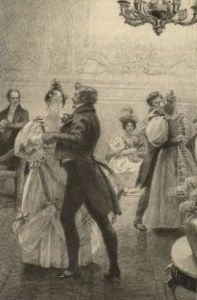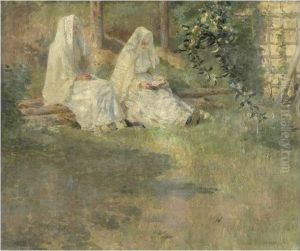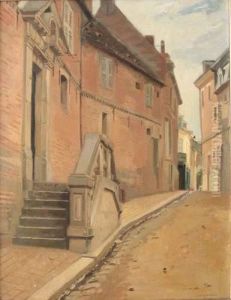Alfred Panon Desba. De Richemont Paintings
Alfred Panon Desbassayns de Richemont, known as Alfred de Richemont, was a French painter and illustrator born on March 1, 1853, in Thury-Harcourt, Calvados, France. He descended from an aristocratic family and was the son of Henri Panon Desbassayns de Richemont. His family's lineage and status provided him with the means to pursue a career in the arts, which was considered a noble endeavor during his time.
De Richemont received his artistic training in Paris, where he studied under influential painters of the era, such as Alexandre Cabanel, a prominent academic artist. His education was rooted in the academic tradition, which emphasized classical painting techniques, the study of anatomy, and drawing from live models and classical sculptures. This academic foundation was instrumental in the development of de Richemont's style, which was characterized by precise draftsmanship and a polished finish.
Throughout his career, de Richemont was known for his historical and genre paintings, which often depicted scenes from history, mythology, and everyday life with an idealized beauty. His works were exhibited at the Paris Salon, the official art exhibition of the Académie des Beaux-Arts in Paris. Gaining recognition at the Salon was a significant achievement for any artist of the time, as it could lead to commissions from wealthy patrons and government entities.
In addition to painting, de Richemont also worked as an illustrator, contributing to various publications. His illustrations often accompanied texts in magazines and books, adding a visual dimension to the written word. His skills as an illustrator further demonstrate his versatility and ability to adapt his academic training to different formats beyond canvas.
Alfred de Richemont's artistic output reflects the tastes and values of the Third French Republic, a period marked by a resurgence of interest in the nation's history and cultural heritage. His works are part of the broader 19th-century European art movement that included Romanticism, Realism, and the early stages of Impressionism, although he remained largely aligned with the academic style.
De Richemont's career spanned several decades, during which he contributed to the rich tapestry of French art. Despite the changes in artistic trends over the years, he remained committed to his academic roots. Alfred Panon Desbassayns de Richemont passed away on April 15, 1918, in Paris. While he may not be as widely known today as some of his contemporaries, his work still offers a glimpse into the artistic endeavors of the period and the enduring legacy of academic art.


